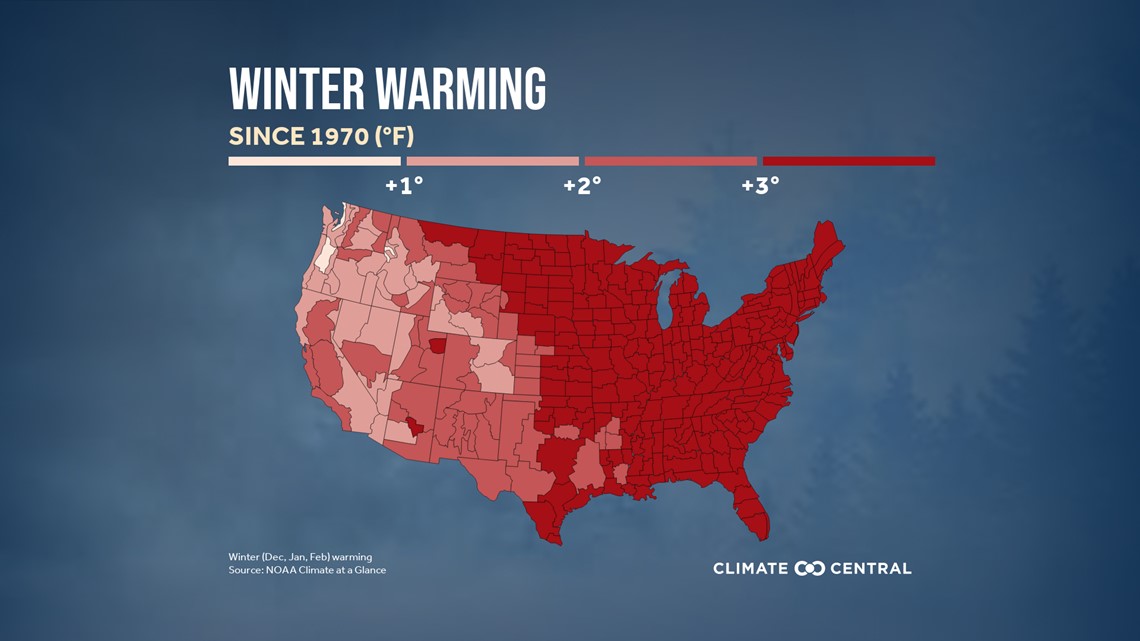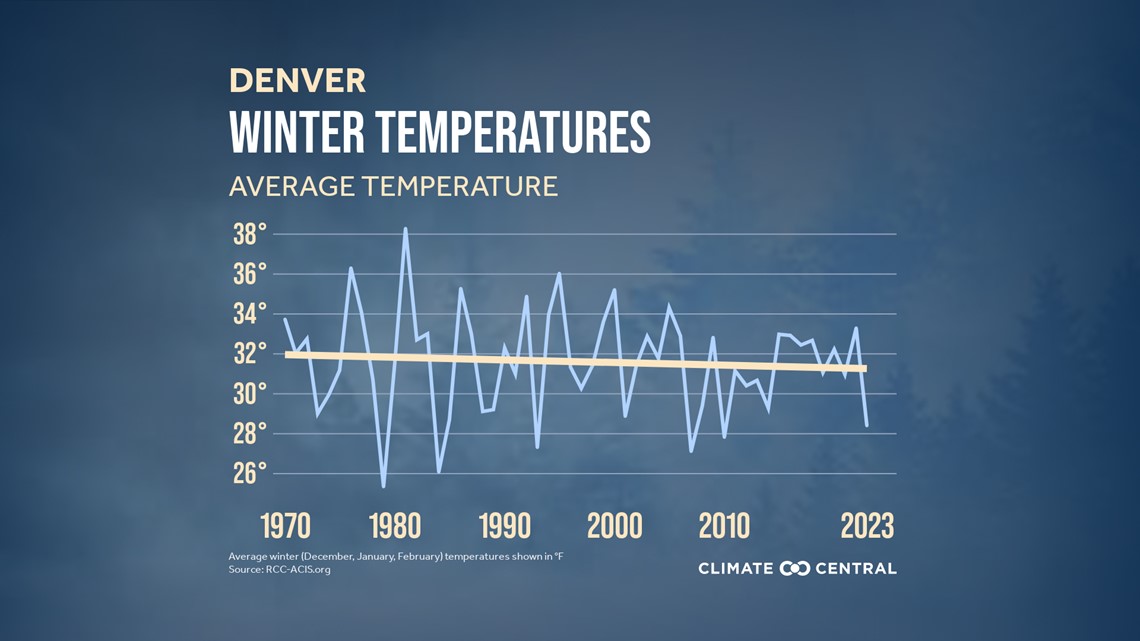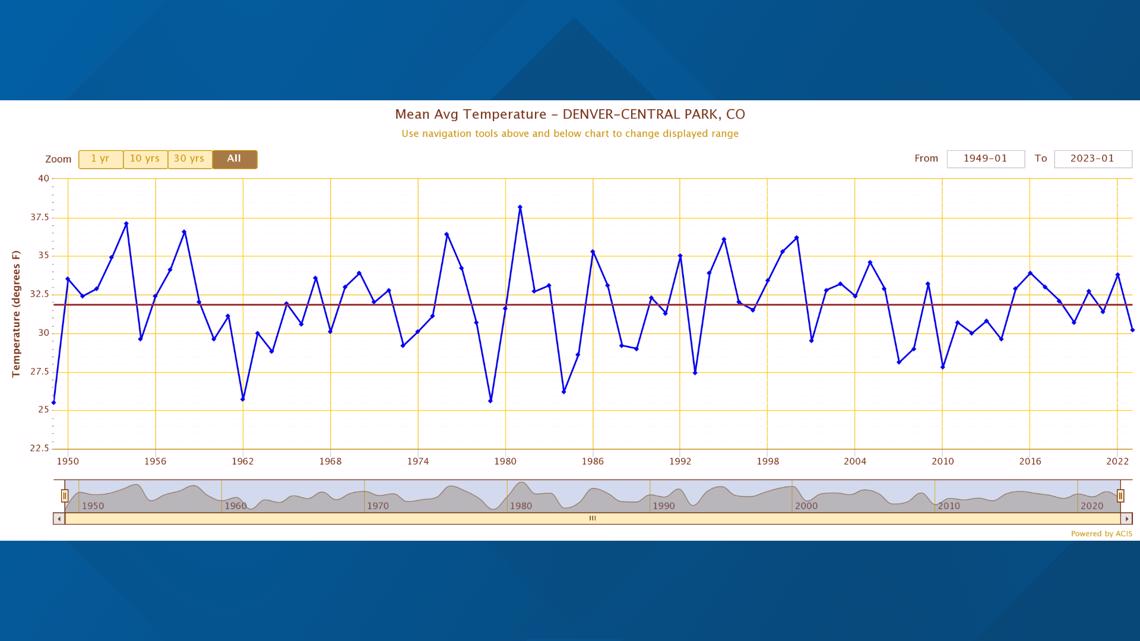DENVER — Winter in the United States is getting warmer. The data shows that every region from the Rocky Mountains to the east coast has warmed by an average of 1 to 4 degrees since 1970.
But part of Colorado is showing the least amount of winter change. Along with a few regions in the Pacific Northwest.
The Colorado Climate Center just published new maps that divide the regions up even further. They show that overall, winter on the Front Range really hasn’t changed much at all over the last 40 years -- just a half degree warmer.
Compare that to a place like St. Louis, where winter is almost 6 degrees warmer now.


“We know that living in Colorado, we are prone to big variations in the weather," said State Climatologist Russ Schumacher. "And that’s just a natural part of our geography and our climate here.”
He said the Front Range gets an extremely cold winter just often enough to offset any climate warming that’s been happening. It's like the extremes are balancing each other out.
For example, Denver went from the 12th warmest December in 2021, to the 17th coldest January in 2023.
Schumacher said that one possible explanation is that weather patterns that alter the jet stream have more of an impact on the Front Range during the winter months than they do any other time of year.
He said the Colorado Climate Center carefully divided the state into 11 new climate divisions. NOAA only officially uses five divisions. He said that helps tease out some variability. It also helps prevent unusual anomalies from disrupting the data.
For example, if you use all the data from Denver's official climate record, it shows a winter cooling trend since 1970. If that were the case, it would be one of the few locations in the country that's cooling in the wintertime.
Schumacher said that's likely because Denver's official weather station was moved to Denver International Airport (DIA) in 1995 from the old airport in the Central Park area.
"Denver's official climate record has been the source of much confusion and even frustration," he said. "DIA really is a different climate. It's much colder in the winter that the city."


Schumacher said the new state climate regions are the most accurate portrayal of changes through time, but if you wanted to use a smaller area like a city, a single location is best.
The weather record at Central Park has been maintained since 1949 even after the official record was moved to DIA. It shows that the average temperature has remained steady over that time span.


Even that record is interesting in that it has not shown a warming winter temperature trend.
But overall, the Front Range is still warming annually, because the summer and fall months are showing dramatic increases in temperature.


Schumacher said because of climate change, he expects both trends to continue – very slight warming in winter, with the bigger changes later in the year.
“As we put heat into the Earth's system it’s going to continue to get warmer," he said. "Now how that plays out year to year can be very complicated but say decade to decade, that’s where there’s very high confidence that the trend is going to continue to go upward.”
More stories from meteorologist Cory Reppenhagen:
SUGGESTED VIDEOS: Latest from 9NEWS

